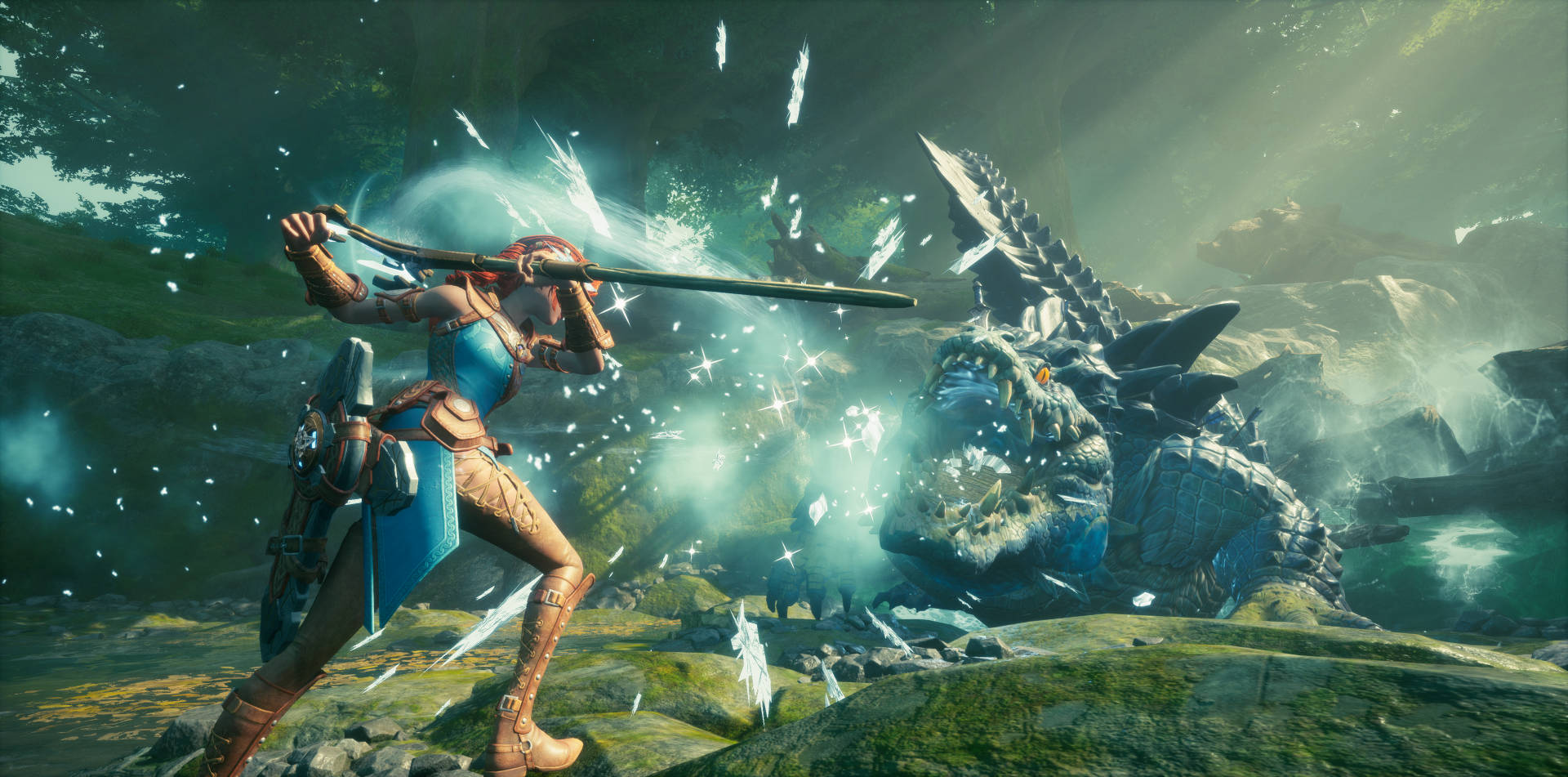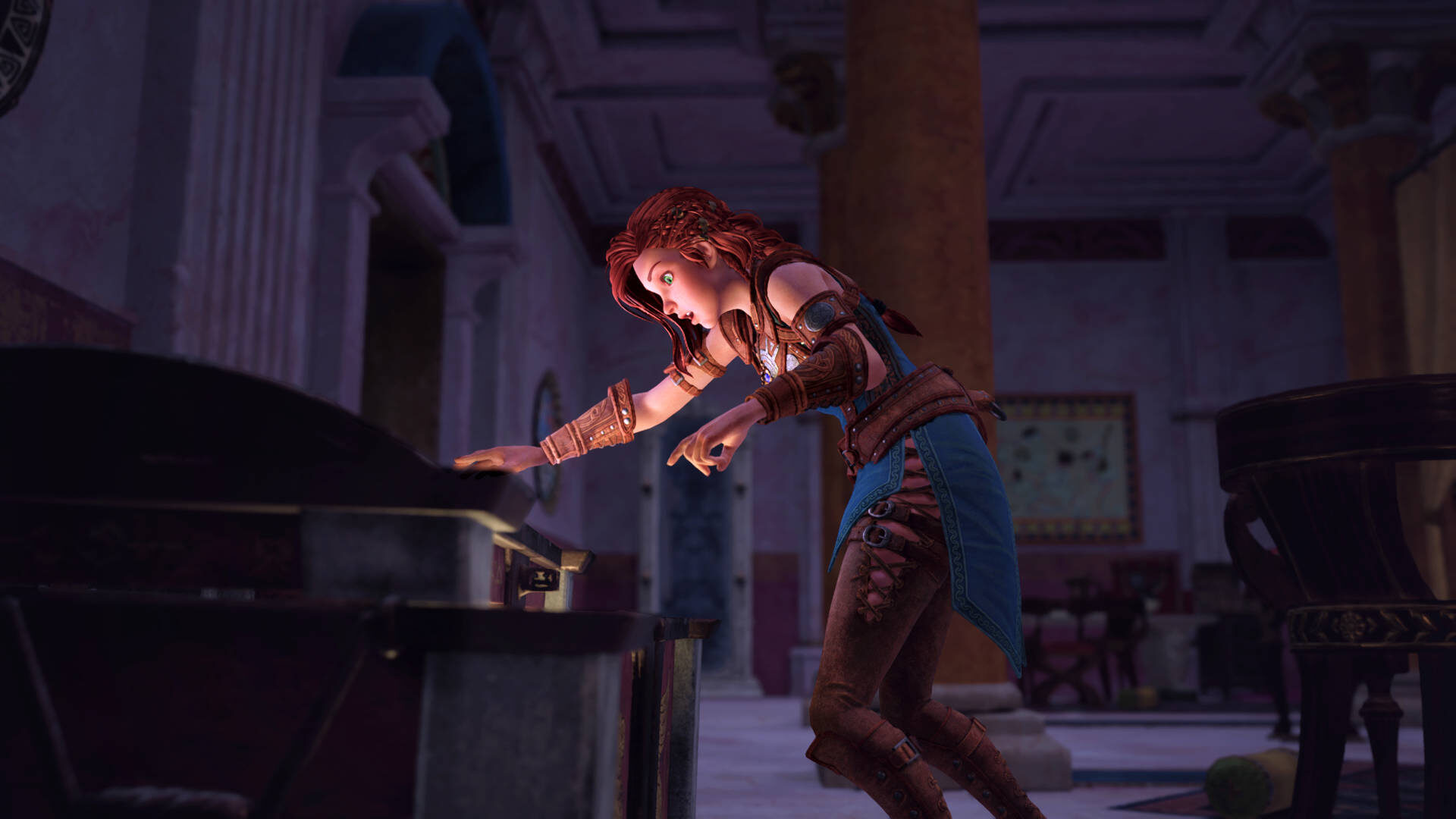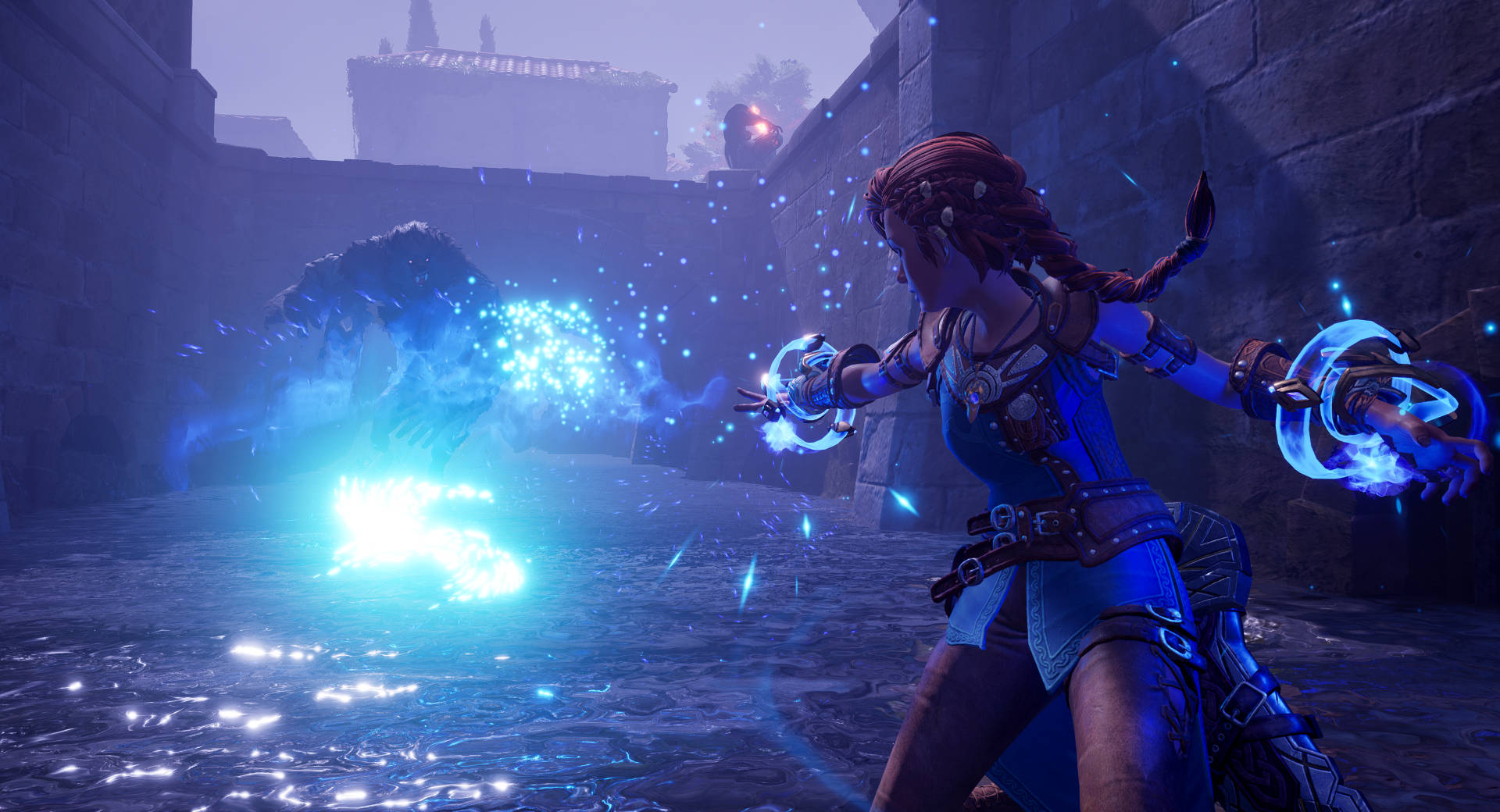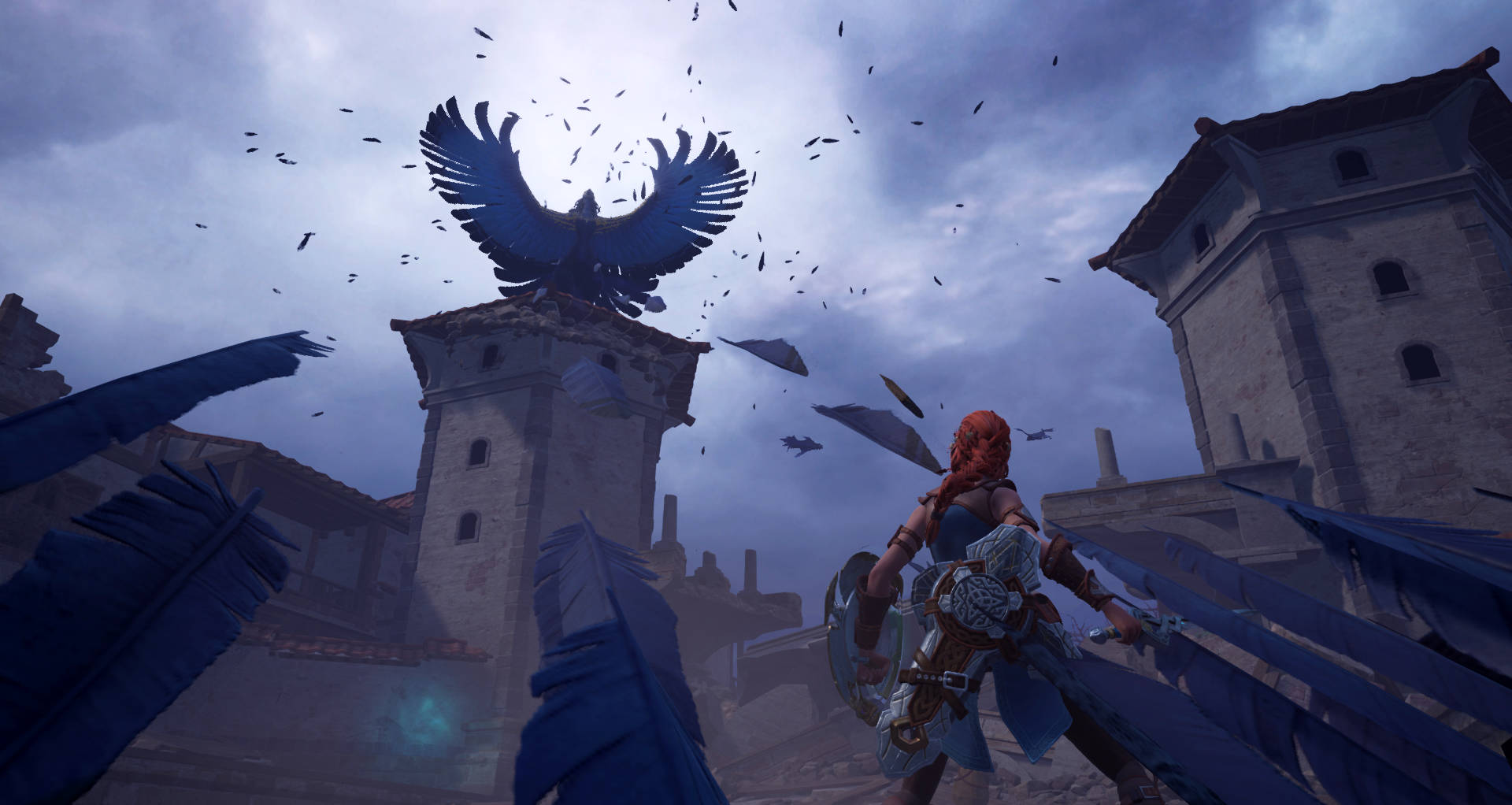Even when your day job centers around keeping up with video games, it’s simply impossible to know about everything that’s out there. From the biggest blockbusters to the smallest indie releases and everything in between, it is unbelievable how many games come out on a weekly (if not daily) basis at this point.
So, sometimes, it takes me running into a new game in some other way to put it on my radar. As was the case with Asterigos: Curse of the Stars, the first project from Acme GameStudio, a team “founded in 2016 by seasoned developers from Blizzard, X-Legend, XPEC, and Runewaker.” I’m a big fan of FromSoftware-focused YouTuber Iron Pineapple, and it was through him that I learned about the game due to it being part of the latest chapter of his “Souls-like games you’ve never heard of” video series.

The thing is, even though the game’s publisher tinyBuild itself uses the term, I’m not sure I’d call Asterigos a Soulslike. Sure, it features some similar gameplay mechanics, such as a stamina-based action system, bonfire-esque resurrection-and-enemy-refresh checkpoints, and a handful of other elements. Really, though, the game reminds me more of the types of action adventure titles we’d get back in the sixth console generation, or for the first few years of the seventh. Back then, when development costs were lower and teams could be smaller, we saw more experimentation within the genre, as games could be more ambitious (but also less polished) in their combat, exploration, and storytelling without instantly risking studio bankruptcy.
It might seem like an insult to say that I could see myself playing Asterigos on something like the Dreamcast or PlayStation 2, but I don’t mean it as one. Saying that a game is “mid-tier” almost feels degrading to some these days, but I appreciate that we still see projects that can exist in that middle ground between the massive worlds of indie and triple-A projects. Everywhere you go in this game, you can feel its limits, from its overall graphical quality and world design, to its combat and core gameplay elements, to its storytelling and character development. I cannot deny that all of those areas of Asterigos could definitely be better, but there’s also a certain charm to its awkwardness, as well as a few areas in which the game punches well above its weight.
One of those, in a surprise to me, came incredibly early in the game. As Asterigos kicks off, main character (and fellow redhead, which I’m always glad to see more of) Hilda watches her father, along with a group of other soldiers from her homeland, head off on a mission from which they don’t return. Hilda is then sent to the ruins of the ancient city of Aphes to find out what’s happened, setting in motion an adventure far bigger than our heroine could have predicted.

Right away, Hilda discovers that a monster has stolen most of her weapons, which then creates a perfect scenario for the player to retrieve those weapons over the course of the game, thus unlocking new fighting styles, exploration abilities, and so on. Except, she then gets everything back within the initial tutorial area. What would come off as a strange twist in other games is a welcome one here, as one of Asterigos’s biggest strengths is its weapon variety. Players can equip Hilda with two different weapons at any one time, picking from the Sword and Shield, Daggers, Hammer, Spear, Staff, and Bracelets. The thing is, each of those choices plays quite differently, more so than how many other games might handle such weapon types. Experimenting with those weapon options and their unique abilities is part of the fun, and because you can switch your equipment at any time almost right from the start, nothing ever feels like the “default” option, or goes under-utilized because you gained it far too late into the game to integrate into your arsenal.
By far the most interesting of Hilda’s weapons for me are the Bracelets. Having played plenty of games with bracer-type offensive items, I assumed they’d make our hero punch really hard, or really fast, or something similar. Instead, they send out a ball of elemental energy around six feet in front of Hilda, with a second tap of the button then bringing that ball back, and a third swinging it around. It’s all a bit hard to explain, in part because I’m not sure I remember the last time I’ve seen a weapon with such an attack pattern in this style of game.
At first, I thought the Bracelets were too nonsensical to even consider using, and yet the more I played, the more I’d come back to them, my curiosity growing over how effective they could be. At this point, they’re now my main weapon, while I sub-wield the Staff, which can either shoot magical projectiles for longer-range attacks, or turn into a spell-powered sniper rifle if aimed and charged. As someone who typically doesn’t like magic-based weapons in video games, the fact that the Staff is a major component of my current loadout says a lot on how appealing I found the game’s take on magic.

The extent to which you can customize Hilda’s weapons in Asterigos is both a blessing and a curse. In addition to gaining four different swappable elemental properties that enhance each weapon, there’s a deep talent tree where you can unlock new abilities and attacks. There’s a wide variety of upgrades waiting for each weapon type, but at least up to the point that I’ve played so far, I feel like the talent points needed to unlock those upgrades have been too few. I can certainly understand not wanting to give the player too much too quickly, but given that Asterigos encourages those players to experiment with the different weapon types right from the start, some of that freedom goes away once you’re having to decide where to focus those upgrades. I’ve barely advanced any of the weapons beyond the Bracelets and Staff, because getting deeper into their trees is gaining me bigger benefits, which leaves the other choices weaker and less capable.
I wonder if gaining talent points per weapon by using said weapon would have been a better option. It’d still allow you to focus on and upgrade the ones you use the most if that’s what you want to do, but would also force you to improve the others with the points you earn from them (especially if you gain those points faster the weaker the weapon). No matter what, I feel like those talent points should come a little quicker in general. Even with being hours into the game, both my skills and perks pages are long lists of abilities that remain locked away—which leaves me feeling like this’ll either be an 80-hour experience, or that I need to be grinding a lot more.
Asterigos: Curse of the Stars has launched at a point in time where I have too many other things going on to give it the attention it’d need for a full review. And yet, after spending some time with it, I really wanted to at least give it some attention. This is the type of release that a lot of you could easily miss, and it’s got enough quirks and rough edges that I think some who try it might give up before getting too far. The more I’ve played Asterigos, though, the more I’ve wanted to keep playing. It doesn’t get everything right, but it does craft a game that feels genuinely unique for everything else I’ve played this year. I might have first discovered Asterigos due to expectations of it being a Soulslike, but what I found was something a little more.
Asterigos: Curse of the Stars is out now for Xbox Series X/S, PlayStation 5, Xbox One, PlayStation 4, and PC.


Mollie got her start in games media via the crazy world of gaming fanzines, and now works at EGM with the goal of covering all of the weird Japanese and niche releases that nobody else on staff cares about. She’s active in the gaming community on a personal level, and an outspoken voice on topics such as equality in gaming, consumer rights, and good UI. Check her out on Bluesky and Mastodon.